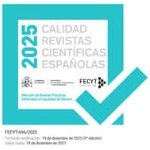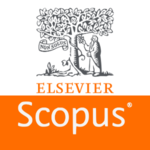Una comunidad textual ideal en la Castilla del primer Doscientos según el Dialogus libri vitae de Rodrigo Jiménez de Rada (V-VI):
sobre la eficacia de Aristóteles y Alejandro Magno en la configuración de un saber letrado
Resumen
El capítulo VI de la sección V del Dialogus libri vitae, escrito por el arzobispo de Toledo Rodrigo Jiménez de Rada hacia 1214 ofrece algunos elementos relativos a la función de los eclesiásticos letrados en una comunidad ideal. Este pasaje constituye una muestra interesantísima del fenómeno de transmisión del saber en la península ibérica y la cuenca del Mediterráneo durante los siglos XII y XIII. El discurso del arzobispo se elabora en torno a la racionalidad política y a la autoridad aristotélica como fuente de filosofía natural, y argumenta que el saber letrado (representado por Aristóteles) es esencial para la formación del monarca (Alejandro). A partir de los estudios de fondo de Pick (2004) y González Diéguez (2017), y a la espera de realizar un trabajo completo sobre la sección V en su conjunto, añadiré alguna propuesta sobre materiales que pudieron contribuir a la escritura de dicho capítulo, defendiendo que la identidad letrada fue asumida como rasgo discriminante por una comunidad de individuos que compartieron lecturas y saberes, la situada en el radio de acción de la catedral toledana en los primeros años del siglo XIII.
Citas
Alberigo, J.; Dossetti, J.; Joannou, P. P.; Leonardi, C.; Prodi, P., eds (1973): Concilium Lateranense IV a. 1215. Conciliorum Oecumenicorum Decreta, Library of Latin Texts. Series A [En línea] http://clt.brepolis.net/LLTA/pages/TextSearch.aspx?key=MCOEMCO12.
Arizaleta, A. (2005): «Las ‘estorias’ de Alexandre: Rodrigo Jiménez de Rada, historiador de Alejandro Magno», Parrilla. C & Pampín, M.,ed, Actas del IX Congreso Internacional de la Asociación Hispánica de Literatura Medieval, 3 vols., Universidad-Editorial Toxosoutos, La Coruña: vol. 1: 343- 359.
Arizaleta, A. (2008): «Aetas alexandrina: les figures d’Alexandre le Grand dans les textes hispaniques des XIIe et XIIIe siècles (avec un excursus sur la datation du Libro de Alexandre)», Cazal F. (ed.), Hommage à Francis Cerdan, Méridiennes, Toulouse: 49-65.
Arizaleta, A. (2010): Les clercs au palais. Chancellerie et écriture du pouvoir royal (Castille, 1157-1230), Les livres d’e-Spania, Paris, SEMH-Sorbonne. http://e-spanialivres.revues.org/154, 2010.
Arizaleta, A. (2014): «Alexandre aux origines de la langue et de la littérature hispanique», Gaullier-Bougassas, C. (dir.), La fascination pour Alexandre le Grand dans les littératures européennes (Xe-début du XVIe siècle). Réinventions d’un mythe, Brepols, Turnhout, vol. 1: 363-412.
Arizaleta, A. (2016): «Prácticas intelectuales y redes de saber clerical en el mundo del pensamiento toledano (1210-1220)», Chastang, P.; Henriet, P.; Soussen, C.,eds, Figures de l’autorité médiévale, Éditions de la Sorbonne, Paris: 13-32. [En línea] https://books.openedition.org/psorbonne/28436?lang=es
Arizaleta, A. (2018): «Hyspanus diecus roderico. Un aperçu des lettres échangées entre le chancelier de Castille et l’archevêque de Tolède (circa 1218)», Cahiers de Civilisation Médiévale, 61. 2, 242: 141-157.
Arizaleta, A. (2022): «Elementos para una historia intelectual del Doscientos castellano: a propósito de Planeta, de Diego García (1218)», Albares R.; Hernández Sánchez, D., ed., XVIII Seminario de historia de la filosofía española e iberoamericana. Estética y filosofía en el mundo hispánico, Luso-Española de Ediciones, Salamanca: 211-225.
Ayala Martínez, C., de (2017): Ibn Tumart, el arzobispo Jiménez de Rada y la ‘cuestión sobre Dios’ , La Ergastula, Madrid.
Ayala Martínez, C., de (2020): «Reseña de Bravo López, F. (ed.), Estoria de los árabes. Traducción castellana del siglo XIV de la Historia Arabum de Rodrigo Jiménez de Rada, Córdoba-Princeton, UCOPress-CNERU-IAS, 2019», Al-Qantara, 41, 2: 575-585. https://doi.org/10.3989/alqantara.2020.v41.i2.
Bielawski, J.; Plezia, M. (1970): «Lettre d’Aristote à Alexandre sur la politique envers les cités», Archiwum Filologiczne, 25: 5-206.
Bizzarri, H. Ó. (2010): Secreto de los secretos. Poridat de las poridades. Versiones castellanas del pseudo-Aristóteles Secretum secretorum, Universidad de Valencia, Valencia.
Bizzarri, H. Ó. (2015): «Le Secretum secretorum en Espagne: de traité médical à miroir de prince», Gaullier-Bougassas, C.; Bridges, M.; Tilliette, J.Y., eds., Trajectoires européennes du ‘Secretum secretorum’ du Pseudo-Aristote (XIIIe-XVIe siècle), Brepols, Turnhout: 187-213.
Bonch-Reeves, K. (2016): Visions of Unity After the Visigoths. Early iberian Latin Chronicles and the Mediterranean World, Brepols, Turnhout: 223-260.
Bradshaw, J.; Halverson, E. (2020): The Hexaemeron in Peter Comestor’s Historia Scholastica, Proyecto de investigación Historia Scholastica Project, Boise State University. [En línea] https://www.boisestate.edu/undergraduate-research/2020/04/22/19-the-hexaemeron-in-peter-comesters-historia-scholastica/.
Burman, T.(1998): «Tafsīr and Translation: Traditional Arabic Qurʾān Exegesis and the Latin Qurʾāns of Robert of Ketton and Mark of Toledo», Speculum, 73, 3: 703-732. https://www.jstor.org/stable/2887495.
Burnett, C. (1976): «The Legend of the Three Hermes and Abū Ma’shar’s Kitāb al-Ulūf in the Latin Middle Ages», Journal of the Warburg and Courtauld Institutes, 39: 231-234.
Burnett, C. (1995): «Magister Iohannes Hispalensis et Limiensis and Qusṭā ibn Lūqā’s De differentia spiritus et animae: A Portuguese Contribution to the Arts Curriculum?» Mediaevalia, Textos e estudos, 7-8: 221-67.
Burnett, C. (2001): «The Coherence of the Arabic-Latin Translation Program in Toledo in the Twelfth Century», Science in Context, 14, ½: 249–288. https://doi.org/10.1017/S0269889701000096.
Burnett, C. (2008): «Royal Patronage of the Translations from Arabic into Latin in the Iberian Peninsula», Grebner G.; Fried, J. (eds.), Kulturtransfer und Hofgesellschaft im Mittelalter. Wissenskultur am sizilianischen und kastilischen Hof im 13. Jahrhundert, Akademie Verlag, Berlin: 323-330. https://doi.org/10.1524/9783050047195.323.
Burnett, C. (2011): «Communities of Learning in Twelfth-Century Toledo», Mews, C. J.; Crossley, J. N., Communities of Learning: Networks and the Shaping of Intellectual Identity in Europe, 1100-1500, Brepols, Turnhout: 9-18.
Burnett, C. (2012): «The Arabo-Latin Aristotle», Van Oppenraay, A.M.I; Fontaine, R., The Letter before the Spirit: The Importance of Text Editions fot the Study of the Reception of Aristotle, Brill, Leiden: 95-107.
Burnett, C.; Mantas-España, P., eds. (2014): Arabica Veritas: Mapping Knowledge: Cross-Pollination in Late Antiquity and the Middle Ages. CNERU–The Warburg Institute– Oriens Academic, Córdoba-Londres.
Cavagna, M. (2008): «Reseña de Claude Thomasset et Danièle James-Raoul (dir.), En quête d’utopies», Cahiers de recherches médiévales et humanistes [En línea]. http://journals.openedition.org/crm/145.
Callataÿ, G. de (1996): Annus Platonicus. A Study of World Cycles in Greek,
Latin and Arabic Sources, Institut Orientaliste de l’UCL-Peeters, Lovaina la Nueva.
Carabias Orgaz, M. (2021): «Dos textos profético-apocalípticos del siglo XIII: De Antichristo qui natus est (1227) y Cedrus alta Libani (1240)», Traditio, 76: 289–312. [En línea]. https://doi.org/10.1017/tdo.2021.2.
Carrasco Manchado, A. I. (2019): «El bien común en la sociedad medieval: entre el tópico, la utopía y el pragmatismo», Lafuente Gómez, M.; Villanueva Morte, C, eds., Los agentes del Estado: poderes públicos y dominación social en Aragón (siglos XIV-XVI), Silex, Madrid: 33-83.
Carvajal González, H. (2010): «Avatares de un manuscrito: las ciencias auxiliares de la Historia del Arte», Anales de Historia del ArteExtra 2: 31-40. [En línea] https://revistas.ucm.es/index.php/ANHA/article/view/ANHA1010220031A.
Díez Yáñez, M. (2015): «Los consejos aristotélicos en el Libro de Alexandre: liberalidad, magnificencia y magnanimidad», Alvar Ezquerra, C. (coord.), Estudios de literatura medieval en la Península Ibérica, Cilengua, San Millán de la Cogolla: 513-536.
Dönitz, S. (2011): «Alexander the Great in Medieval Hebrew Traditions», Zuwiyya, Z. D. (ed.), A Companion to Alexander Literature in the Middle Ages, Brill, Leiden: 2138.
Dumas-Reungoat, C. (2010): «Les premiers jalons du millénarisme: ferments
d’utopie ?», Kentron, 26. https://doi.org/10.4000/kentron.1384.
Draelants, I.; Frunzeanu, E. (2017): «Le savoir astronomique et ses sources dans le De mundo et corporibus celestibus de Barthélemy l’Anglais», Rursus. [En línea] http://journals.openedition.org/rursus/1352 ; DOI : https://doi.org/10.4000/rursus.1352.
Escobar, Á. (2020): «Vías de transmisión y modos de recepción de la Política de Aristóteles en la España Medieval», Cahiers d’études hispaniques médiévales, 43: 19-48. https://doi.org/10.3917/cehm.043.0019.
Escobar, Á. (2021): «El rey Aristóteles, el obispo Alejandro y el ojo blanco del Anticristo: en torno a la Interrogatio de nobissimo en el RAH, Aemil. 60», Troianalexandrina: Anuario sobre literatura medieval de materia clásica, 2: 41-62.
Escobar, Á. (2022): «Iter Aristotelicum: en torno a la circulación de manuscritos aristotélicos en la España medieval», Estudios Clásicos, 162: 109-127. 10.48232/eclas.162.04.
Fidora, A.; Alexis Rivera Luque, J.L. (2023), «The Multiplicity of Translating Communities in the Iberian Peninsula (12th–13th Centuries)», Brentjes, S.; Barker, P.; Brentjes, R., ed., Routledge Handbook on the Sciences in Islamicate Societies. Practices from the 2nd/8th to the 13th/19th Centuries, Routledge, Londres: 705-720.
Foz, C. (1988): «La traduction-appropriation: le cas des traducteurs tolédans des 12ème et 13ème siècles», TTR, 1, 2: 58-64. https://doi.org/10.7202/037018ar
González Diéguez, G. (2017), «The Judeo-Arabic Source of a Pseudo-Aristotelian Passage in Jiménez de Rada’s Dialogue on the Book of Life (1214)», eHumanista, 36: 328-339. [En línea] https://www.ehumanista.ucsb.edu/volumes/36.
González Rolán, T.; Saquero Suárez-Somonte, P. (2003), «La imagen polimórfica de Alejandro Magno desde la Antigüedad latina al Medievo hispánico: edición y estudio de las fuentes de un desatendido Libro de Alexandre prosificado», Cuadernos de Filología Clásica. Estudios Latinos, 23, 1: 107-152. [En línea] https://revistas.ucm.es/index.php/CFCL/issue/view/CFCL030323.
González Rolán, T., (2014): «Del árabe al latín pasando por el castellano: el ejemplo del Liber philosophorum moralium antiquorum», Helmántica, 65, 194: 181-194.
Grignaschi, M. (1976): «L’origine et les métamorphoses du Sirr al-asrâr», Archives d’histoire doctrinale et littéraire du Moyen Âge, 43: 7-112.
Grignaschi, M. (1980): «La diffusion du Secretum Secretorum dans l’Europe occidentale», Archives d’histoire doctrinale et littéraire du Moyen Âge, 48 : 7-70.
Grignaschi, M. (1982): «Remarques sur la formation et l’interprétation du Sirr al-asrâr», Ryan W. F.; Schmitt, C. B. (eds.), Pseudo-Aristotle’s ‘The Secret of Secrets’: Sources and Influences, Warburg Institute, Londres: 3-33.
Guenée, B. (1993): L’Occident aux XIVème et XVème siècles. Les États, Presses Universitaires de France, París.
Gutas, D., ed. (2022): Why translate science? Documents from Antiquity to the 16th century in the historical West (Bactria to the Atlantic), Brill, Leiden-Boston.
Hermans, E. (2019): «Intellectual Discourse and Global Connectivity in the Early Middle Ages», Bloomsbury Encyclopedia of the Global Middle Ages, Arc Humanities Press, Londres: 2-11.
Hernández, F. J. (2003): «La hora de don Rodrigo», Cahiers de linguistique et de civilisation hispaniques médiévales, 26, 2003: 15-71. https://doi.org/10.3406/cehm.2003.2011
Jouanno C. (2010): «Des Gymnosophistes aux Réchabites: une utopie antique et sa christianisation», L’antiquité classique, 79: 53-76. https://doi.org/10.3406/antiq.2010.3766
König, D. G. (2011): «Traductions et transferts de savoirs. À propos des relations entre l’Occident latin et le monde arabo-musulman», König, D. G.; Benhima, Y., dirs., Traductions et transferts des savoirs dans l’espace euro-méditerranéen à l’époque médiévale, Trivium, 8.https://doi.org/10.4000/trivium.3973.
Lida de Malkiel, M. R. (1961-1962): «La leyenda de Alejandro en la literatura medieval», Romance Philology, 15: 413-423.
Mantas España, P. (2018): «Algunos apuntes sobre la recepción de la apologética antimozárabe en el siglo XIII», Enrahonar, Supplement Issue: 239-250. https://ddd.uab.cat/pub/enrahonar/enrahonar_a2018nsupissue/enrahonar_a2018nSupplp239.pdf.
Manzalaoui,M. (1974): «The Pseudo-Aristotelian ‘Kitāb Sirr al-asrār’: Facts and Problems», Oriens, 23/24: 147–257.
Marcos Rodríguez, F. (1962): «El Dialogus libri vitae del arzobispo Jiménez de Rada», Salmanticensis, 9: 617-622.
Novikoff, A. J. (2012): «From dialogue to disputation in the age of Archbishop Rodrigo Jiménez de Rada», Journal of Medieval Iberian Studies, 4,1: 95-100.10.1080/17546559.2012.677194.
Pick, L. K. (1997): «Rodrigo Jiménez de Rada and the Jews: Pragmatism and Patronage in Thirteenth-Century Toledo», Viator, 28: 203-222.
Pick, L. K. (1998): «Michael Scot in Toledo: ‘natura naturans’ and the hierarchy of being», Traditio, 53: 93-116.
Pick, L. K. (2004): Conflict and Coexistence. Archbishop Rodrigo and the Muslims and Jews of Medieval Spain. The University of Michigan Press, Ann Arbor.
Polloni N. (2016): «Aristotle in Toledo: Gundissalinus, the Arabs and Gerard of Cremona’s Translations», Burnett, C.; Mantas-España, P., eds., Ex Oriente Lux. Translating Words, Scripts and Styles in Medieval Mediterranean Society. Selected Papers, CNERU–The Warburg Institute, Córdoba-Londres: 147-185.
Ramírez Vaquero, E. (2011): «Pensar el pasado, construir el futuro: Rodrigo Jiménez de Rada», 1212-1214: el trienio que hizo a Europa, Pamplona, Gobierno de Navarra: 13-46.
Reis, Levilson C. (2011): «Clergie, Clerkly Studium, and the Medieval Literary History of Chrétien de Troyes’s Romances», The Modern Language Review, 106, 3: 682-696.
Saif, L. (2021): «A Preliminary Study of the Pseudo-Aristotelian Hermetica: Texts, Context, and Doctrines», Al-ʿUṣūr al-Wusṭā, 29 : 20-80. https://doi.org/10.52214/uw.v29i1.8895.
Stock, B. (1987): The Implications of Literacy: Written Language and Models of Interpretation in the 11th and 12th Centuries, Princeton University Press, Princeton.
Stock, B. (1990): Listening to the Text: On the Uses of the Past, Baltimore: Johns Hopkins University Press.
Rodríguez López, A. (2003): «De rebus Hispaniae frente a la Crónica latina de los reyes de Castilla : virtudes regias y reciprocidad política en Castilla y León en la primera mitad del siglo XIII», Cahiers de linguistique et de civilisation hispaniques médiévales, 26: 133-149.10.3406/cehm.2003.2016.
Roumier, J. (2013): «La figure héroïque d’Alexandre le Grand en Espagne à la fin du Moyen Âge comme modèle du rapport à l’étranger. El Libro Ultramarino et El Libro de las maravillas de Jean de Mandeville (XIVème et XVème siècles)», e-Spania [En línea] http://journals.openedition.org/e-spania/22488; DOI: https://doi.org/10.4000/espania.22488.
Sère, B. (2010): «Aristote et le bien commun au moyen âge: une histoire, une historiographie», Revue Française d’Histoire des Idées Politiques, 2, 32: 277-291.
Schmitt, C. B.; Knox, D. (1985), Pseudo-Aristoteles Latinus: A Guide to Latin Works Falsely Attributed to Aristotle before 1500, The Warburg Institute, Londres.
Markus Stock (ed.), Alexander the Great in the Middle Ages: Transcultural Perspectives, University of Toronto Press, 2016.
Théry, J.; Gilli, P. (2010): «Innocent III et la fiscalité communale imposée au clergé: le cas lombard», Le gouvernement pontifical et l’Italie des villes au temps de la théocratie (fin-XIIe-mi-XIVe s.), Presses universitaires de la Méditerranée: 299-329. halshs-00879229
Thomasset, C.; James-Raoul, D., dirs. (2005), En quête d’utopies, Paris, Presses de l’Université Paris-Sorbonne.
White, T. I. (1976): «Aristotle and Utopia», Renaissance Quarterly, 29, 4: 635-675.
Williams, S. J. (1994): «The Early Circulation of the Pseudo-Aristotelian ‘Secret of Secrets’ in the West», McVaugh, M. R.; V. Pasche (eds.), Le scienze alla corte di Federico II, Brepols-SISMEL, Turnhout-Florence: 127-144.
Witcombe, T. (2019): Between Paris and Al-Andalus: Bishop Maurice of Burgos and his World, c.1208-1238, Tesis Inédita, Universidad de Exeter.
Wrisley, D. J. (2016): «Modeling the Transmission of al-Mubashshir Ibn Fātik’s Mukhtār al-Ḥikam in Medieval Europe: Some Initial Data-Driven Explorations», Journal of Religion, Media and Digital Culture, 5, 1. [En línea] https://archive.nyu.edu/handle/2451/10.1163/21659214-90000076
Derechos de autor 2024 Amaia Arizaleta, Dra.

Esta obra está bajo licencia internacional Creative Commons Reconocimiento-NoComercial-CompartirIgual 4.0.
Los artículos publicados en Cuadernos del Cemyr se distribuyen a través del portal web del Servicio de Publicaciones de la Universidad de La Laguna y son de libre acceso bajo una licencia Creative Commons Reconocimiento-NoComercial-CompartirIgual 4.0 Internacional (CC BY-NC-SA 4.0).
Los autores conservan los derechos de autor y garantizan a la revista el derecho a hacer la primera publicación del trabajo, así como una licencia Creative Commons que permita a otros compartir el trabajo con un reconocimiento de la autoría del trabajo y la publicación inicial en esta revista científica.
Los autores pueden establecer por separado acuerdos adicionales para la distribución no exclusiva de la versión del trabajo publicado en Cuadernos del Cemyr (por ejemplo, publicarlo en un repositorio institucional o en un libro), con el reconocimiento de su publicación inicial en esta revista.








